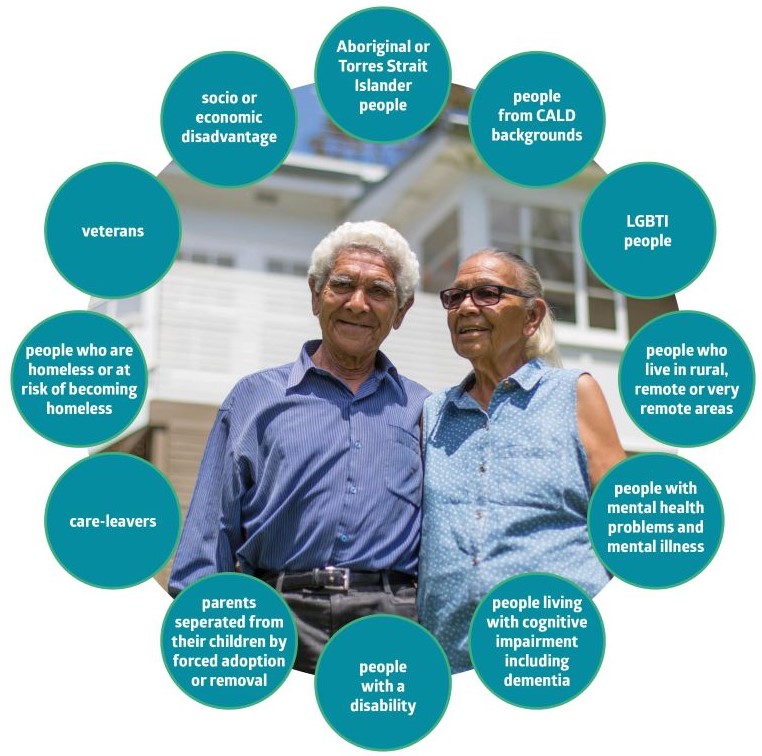Healthy@home clients share their diverse life stories
When 77-year-old Barbara (not her real name) went into hospital for a knee replacement, the last thing she expected was for community service provider Footprints in Brisbane to find her the solution to a decluttering problem that had been plaguing her for years. Barbara lives at home alone in the flat she has occupied for the past 20 years.
But she says it was not a good place to recover because she had managed to fill her flat with an insurmountable pile of “stuff”. To get from bedroom to bathroom was like tackling an obstacle course and impossible for someone still coming to grips with a new knee.
“I have a hoarding problem,” she says. “It had got to the point where I just couldn’t face it. I didn’t even know where to start. It was easier just to ignore it.”
And so she learnt to live with it.
The former nurse who retired a decade ago had a total knee replacement last October and after leaving hospital a few days later, was unsure how she would manage. At first, she stayed with a friend, but then realised she was going to need more help and went into respite care.
“And that’s how I got into the system,” she says. “I had an ACAT assessment during my weeks in respite. I had worked in aged care so I knew all about it.”
Footprints decluttering service steps in
But what she didn’t know was that Footprints could help her with her main problem – decluttering and making her home manageable again.
“During the course of the ACAT interviews I mentioned that I had a bit of a hoarding problem, then someone called from Footprints and explained they could help. I was a bit reluctant at first. I was thinking I was just a bit pathetic and could do it myself if only I could get going.”
A Footprints case manager called and did an assessment of Barbara’s house and situation and told her, “Yes, we can help.”
“He could see that I had a major problem with it and it was hard for me to get around my flat,” she says. “It was just too hazardous.”
A Footprints support worker began visiting in late February to help Barbara begin the monumental task of decluttering.
The arrangement was for two hours a week, for six weeks, although there was flexibility for fewer hours extended over a longer period, so Barbara could work on the task herself in between visits.
“I had given up, but she helped me and made me see that it was possible,” Barbara says.
First was the dining table, which was covered with papers piled “about nine inches high” – mail, receipts, books, stickers, stationery – the stack had just kept growing.
Barbara couldn’t even find space on a chair to sit at the table. It had not been used for its intended purpose for 10 years.
But with help, Barbara was ready for the job.
A place for everything
“A lot of stuff just went in the bin. We filled two bags for the recycling bin from the dining room,” she says. “There were also a lot of papers that needed to be put away and I had never filed them. I learnt that there is a place for everything and all I had to do was put it in its place. It is possible to make space for things.
“I saw my carpet that I hadn’t seen for 10 years.”
The third week they tackled the bathroom, taking everything out and cleaning up. But not everything went back.
Cosmetics, bottles of moisturiser and cleanser in various stages of use were packed up and removed. Some were thrown out, while others were earmarked for donation to women’s shelters.
Every room needed attention.
“There was a printer that should have bene thrown out years ago. We cleared off the top of the TV cabinet and I packed up a box of stationery to send to the schools in New Guinea,” Barbara says.
“There is still more for me to do, but now it is manageable. It’s no longer an obstacle course and I discovered that it can be done, rather than throwing up my hands in despair, rolling my eyes, and putting my nose in a book.”
She is now tackling the bedroom where another desk is covered in stacks of papers, a pile of 15 books sits beside her bed, and clothes and linen fill every available space.
She admits there are garments dating back decades that could go straight to the bin and that there are a lot of unused utensils cluttering her kitchen. That’s next on her list.
“I know that if I give it an hour I can sort it. I now know what I want to do,” Barbara says. “My unit is plenty big enough for one person.”

The Aged Care Diversity Framework
The Aged Care Diversity Framework aims to ensure a high quality aged care system that embraces the diverse characteristics and life experiences of consumers. Older people with diverse needs. characteristics and life experiences may be part of a group or multiple groups that may have encountered exclusion, discrimination and stigma during their lives.
The above article is part of a series that tells the real life stories of healthy@home clients. It has has been approved for publishing by the service provider and client.

